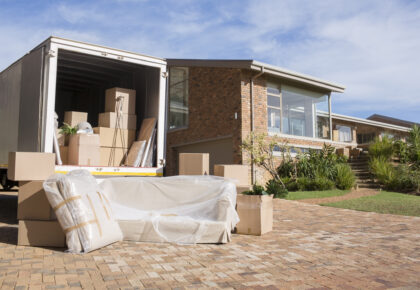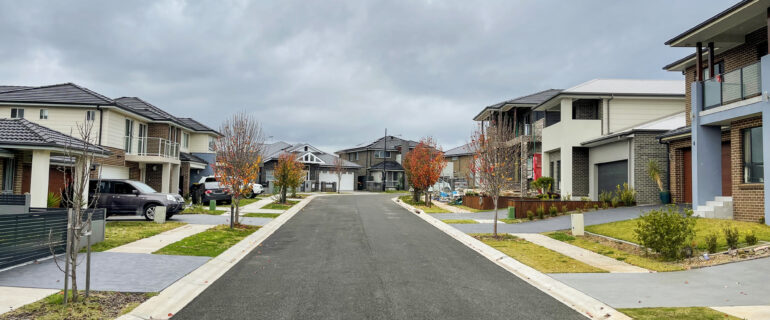It’s unpleasant to contemplate, but natural disasters, accidents and crime can put your home and belongings at risk. Home and contents insurance can provide some assurance to homeowners concerned about protecting their property and belongings.
How does home and contents insurance work?
Home and contents insurance is usually bundled together in one policy. It includes two components:
- Home insurance (sometimes called building cover) protects your property’s structural elements, including windows, walls, plumbing and permanent fixtures like air conditioning units.
- Contents insurance. This part protects items inside the house, including furniture, whitegoods, electronics and other valuables.
Home insurance coverage may differ from policy to policy, but the terms should include damage caused by bushfires, storms, floods, earthquakes and theft.
How much is home and contents insurance?
The average monthly cost for home and contents insurance in Australia is $128, or $1,534 annually[1].
However, this ‘average’ is anything but average. In reality, the cost of home insurance or home and contents insurance varies greatly across the country.
State-by-state breakdown
Below is a breakdown of the policy costs, including estimated components of each home insurance premium.
The average monthly cost of home insurance in ACT is about $102[1].
| Australian Capital Territory (ACT) | |
|---|---|
| Storm | $183 |
| Flood | $43 |
| Cyclone | $0 |
| Earthquake | $65 |
| Bushfire | $9 |
| Other insurer cost components | $807 |
| Stamp Duty, Levies and GST | $111 |
| Total premium | $1,218 |
The average monthly cost of home insurance in NSW is about $150[1].
| New South Wales (NSW) | |
|---|---|
| Storm | $306 |
| Flood | $102 |
| Cyclone | $5 |
| Earthquake | $37 |
| Bushfire | $47 |
| Other insurer cost components | $772 |
| Stamp Duty, Levies and GST | $519 |
| Total premium | $1,789 |
The average monthly cost of home insurance in SA is about $78[1].
| South Australia (SA) | |
|---|---|
| Storm | $93 |
| Flood | $88 |
| Cyclone | $0 |
| Earthquake | $44 |
| Bushfire | $13 |
| Other insurer cost components | $530 |
| Stamp Duty, Levies and GST | $170 |
| Total premium | $938 |
The average monthly cost of home insurance in TAS is about $87[1].
| Tasmania (TAS) | |
|---|---|
| Storm | $149 |
| Flood | $37 |
| Cyclone | $0 |
| Earthquake | $17 |
| Bushfire | $82 |
| Other insurer cost components | $579 |
| Stamp Duty, Levies and GST | $181 |
| Total premium | $1,045 |
The average monthly cost of home insurance in VIC is about $95[1].
| Victoria (VIC) | |
|---|---|
| Storm | $162 |
| Flood | $72 |
| Cyclone | $0 |
| Earthquake | $44 |
| Bushfire | $17 |
| Other insurer cost components | $647 |
| Stamp Duty, Levies and GST | $198 |
| Total premium | $1,140 |
The average monthly cost of home insurance in WA is about $128[1].
| Western Australia (WA) | |
|---|---|
| Storm | $141 |
| Flood | $110 |
| Cyclone | $126 |
| Earthquake | $42 |
| Bushfire | $37 |
| Other insurer cost components | $698 |
| Stamp Duty, Levies and GST | $328 |
| Total premium | $1,534 |
The average monthly cost of home insurance in NT is about $200[1].
| Northern Territory (NT) | |
|---|---|
| Storm | $241 |
| Flood | $67 |
| Cyclone | $1,505 |
| Earthquake | $43 |
| Bushfire | $17 |
| Other insurer cost components | $103 |
| Stamp Duty, Levies and GST | $415 |
| Total premium | $2,390 |
The average monthly cost of home insurance in QLD is about $175[1].
| Queensland (QLD) | |
|---|---|
| Storm | $306 |
| Flood | $235 |
| Cyclone | $222 |
| Earthquake | $13 |
| Bushfire | $33 |
| Other insurer cost components | $933 |
| Stamp Duty, Levies and GST | $347 |
| Total premium | $2,089 |
What determines the cost of your policy?
Home insurance can pay for everything from small repairs like a broken window or a small leak in the ceiling to a complete reconstruction of your property if destroyed. Some policies may also include accommodation while the repairs are taking place.
The standard cover will usually include the structural parts of your home. If you have other structures on your land (such as a pool, tennis court, or shed), you must include them as optional extras, which will come at a higher cost.
Other factors that determine the cost may include:
- The value of your coverage. The size of your policy (the amount you insure) directly impacts the amount you pay every month.
- The type of cover you choose, whether that’s a basic level of insurance that covers the bare minimum or a higher level of coverage that will cost more.
- The size, age, and quality of your home, including any features or enhancements you’ve added, like weather-proofing or alarm systems.
- The location of your property. If you live in an area prone to natural disasters, you’ll probably have to pay more.
- The crime rate in your area similarly affects the price of your premium.
- Your claim history. Previous claims can also affect the insurance cost and may drive it up.
- Your excess amount. Paying more if you need to make a claim can lower your premium.
- Optional extras or add-ons. Opting for extra cover (like accidental damage, flood cover, portable contents, or specific personal valuables added on) can also drive up the cost of your premium.
How to decide your level of coverage
There are two main types of home insurance:
- Sum-insured cover: An estimate of how much it would cost to rebuild your entire home.
- Total replacement cover: An estimate of the cost to rebuild your home to the same standard.
According to the Australian Securities and Investments Commission (ASIC), you are less likely to be underinsured with total replacement cover. However, it is usually more expensive.
Overinsurance and underinsurance
You should also be aware of overinsurance and underinsurance.
- Overinsurance is when you pay for things you don’t genuinely need. Be careful not to agree to coverage that someone may tell you is essential but doesn’t actually apply to you. For example, without carefully reading your policy, you may pay expensive coverage for bushfire damage, even though you live in an apartment in Melbourne’s CBD.
- Underinsurance, on the flip side, occurs when you don’t get the coverage you need. For instance, you may pay for home and contents insurance, which covers you for theft. However, you must be sure you list all the items you require to be covered. For example, if you own thousands of dollars worth of sports memorabilia, you need to make sure this is specified in your policy, as it may not automatically be covered. The same goes for expensive jewellery, electronics or camera equipment.
How to compare policies
When comparing insurance policies, always read the product disclosure statement — a document all insurers must provide. It includes the claims process and any exclusions to your coverage.
Additionally, when choosing the inclusions and exclusions of your policy, consider the following factors:
- Location. If you live in a flood-prone or bushfire area, you may need to pay extra to be covered, and you also need to be sure your policy includes these events. On the flip side, make sure you don’t pay for coverage you don’t need.
- Size and age. Knowing when and how your home was constructed is important for your insurance. It might mean your house has poor security against theft or may not be able to withstand strong winds in a storm.
- Value. Of course, how much your house costs to build or buy will also factor into your insurance. You want to know you are covered for the total amount it would cost to rebuild should the worst happen. Remember, the better the coverage, the more you typically pay premiums.
Other types of insurance to know
If you are a first-time home buyer or looking to buy a property, there are other insurance products you’ll hear about. These include:
- Lenders mortgage insurance. This policy is designed to protect the lender rather than the homeowner. It’s required when your deposit is less than 20% of the home price.
- Income protection. This policy is designed to pay part of your lost income (up to 90%) should you be too unwell or injured to work.
- Mortgage protection insurance. If you lose your job or cannot work, mortgage protection insurance can cover your home loan repayments.
- Title insurance. This is specialised insurance designed to protect home buyers and homeowners from issues that may arise with property titles, such as errors made by previous owners and identity theft.
- Life insurance. If you pass away, life insurance pays your dependents or loved ones a lump sum.
Frequently asked questions about home and contents insurance
Lenders mortgage insurance (LMI) is a different product designed to protect the lender rather than the homeowner. It is a one-off, upfront payment that you may need to pay if your deposit is less than 20% of the home’s price. In such a scenario, you may need to pay both LMI and home insurance.
Article Sources
-
Actuaries Institute, “Home insurance affordability and socioeconomic equity in a changing climate (August 2022),” accessed March 13, 2024.
DIVE EVEN DEEPER

Can You Get A Mortgage Insurance Refund?
You may be entitled to a mortgage insurance refund if you paid mortgage insurance over some or all of the term of your home loan.

What Is A Freehold Property Title?
A freehold property title is the most common property type in Australia. Here’s what you need to know about it.

Costs To Know When Buying a House
Costs to consider when buying a house include stamp duty, mortgage registration fees, and conveyancing costs.

What Is A Strata Title?
When purchasing property in Australia, it’s important to understand the different kinds of titles and how they impact your control as an owner.

